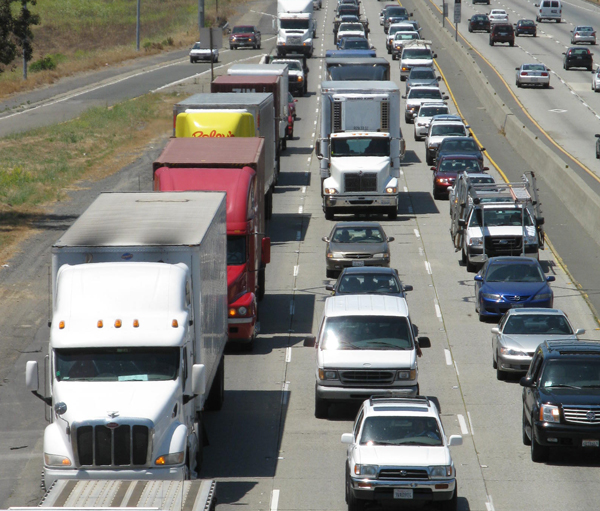 Here’s a news flash: California has an air pollution problem. According to the American Lung Association’s 2009 State of the Air Report, 38 of California’s 52 counties get failing grades for either high ozone or particle pollution days. (You can see your own county’s grades for ozone and air particle pollution at the State of the Air website.)
Here’s a news flash: California has an air pollution problem. According to the American Lung Association’s 2009 State of the Air Report, 38 of California’s 52 counties get failing grades for either high ozone or particle pollution days. (You can see your own county’s grades for ozone and air particle pollution at the State of the Air website.)
In fact, last month the federal EPA’s new director for San Francisco-based Region 9 made an astonishing claim on KQED’s Forum program. Jared Blumenfeld said that more Californians die from air pollution than from car wrecks. When a caller asked him to back up the claim, Blumenfeld provided the following statistics:
– Traffic-related fatalities: 3,949 deaths per year from 3,535 fatal collisions (average for 1999-2008)
– Deaths associated with PM2.5 exposure above 5 ug/m3 in California : 18,000 deaths per year
Cars are doing double duty in these statistics, since passenger vehicles are a large source of air pollution. Over the decades the state has addressed this fact with landmark efforts to regulate vehicle emissions, in efforts initially to improve local air quality and more recently, to reduce greenhouse gas emissions.
In a new study released this week by the Public Policy Institute of California (PPIC), researchers looked at two state priorities: reducing greenhouse gas emissions that cause global warming and improving air quality to benefit public health, and evaluated the effectiveness of four potential transportation strategies to address both.
What they found is something that policymakers have known all along: there are no easy answers. And everything involves a trade-off.
PPIC research fellow Louise Bedworth compared the cost, public health benefits, and GHG reduction potential for various alternative-fuel vehicles; battery-electrics, fuel cell, ethanol, and for reducing overall vehicle miles. What she found is that transforming California’s vehicle fleet to battery-electric vehicles provides the greatest public health benefit, but that high costs and technological uncertainty make this option far from ideal.
On the flip side, said Bedsworth, while we have the technology for vehicles to run on corn-based ethanol, research shows that when indirect land-use costs are considered, corn-based biofuels provide no significant public health or climate change benefit.
But while the PPIC looks at local health and global warming effects separately, a new study out of Stanford has found that the two are directly linked. It’s well established that carbon dioxide contributes to global warming and that increased temperatures can exacerbate air pollution, but the new study shows that CO2 “domes” that develop over urban areas are, in fact, causing health problems for city-dwellers. The study, conducted by civil and environmental engineering professor Mark Jacobsen, looked at models for the contiguous 48 states, for California and for the Los Angeles area. Results showed an increased death rate in all three areas compared to what the rate would be if no local carbon dioxide were being emitted.
Neither current regulations, nor the federal cap-and-trade bill passed by the House address the local effects of CO2 emissions on health. Jacobsen says that this study provides evidence that they should. He estimated an increase in premature mortality of 50-to-100 deaths per year from local CO2 emissions in California.
Jacobsen talks about his study in the video, below.
